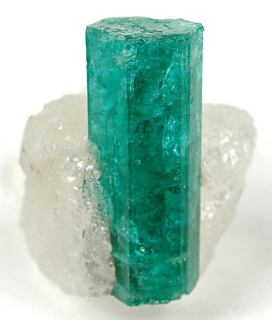-READ THE INGREDIENTS–
9 realities of overcoming the labeling charade

When starting a health journey, and striving to eat cleanly, it is crucial to come face-to-face with the mysterious ingredients list. For many (myself included), turning a product around in order to peruse its actual contents is not an innate practice. It was not taught in Grade School, and has not dictated our food choices…until now.
Information about the quality of food is readily available today, creating a more knowledgeable and curious public; Days of consuming fast-food dinner without discerning what’s in it are (largely) over, thanks to the health and whole foods trend. Once beginning a healthy lifestyle, and making subsequent dietary changes, one quickly discovers the charade that is food packaging/labeling, and how much storytelling is actually involved.
1.)You may not be eating what you think you’re eating…
Do it…turn the box/bag/jar/can/carton over…and shatter the illusion

It all comes crashing down rather quickly. Fanciful, colorful packaging couples with evocative, misleading language in order to pitch a product to potential buyers. The product is left up to the imagination, and it becomes whatever consumers hope it could be in their wildest dreams. A package of Strawberry Fruit Roll Ups, boasting bright red, juicy Strawberries on the box, inspires associations of Strawberry fields and baskets of berries filled to the brim; The Fruit Roll Ups turn into a pseudo healthy snack.
However, the truth is less…juicy. In fact, there was a lawsuit against Fruit Roll Ups in 2012, involving a woman who claimed that their Strawberry flavor did not contain any real Strawberries despite pictures on the box. The product says “made with real fruit”, which leads the buyer to believe that most of its constituents come from actual fruit. This is clearly false and misleading, resulting in Strawberry Fruit Rolls Ups void of Strawberries.
In fact, the current ingredients of Strawberry Fruit Roll Ups read: Corn Syrup, Dried Corn Syrup, Sugar, Pear Puree Concentrate, Palm Oil, Contains 2% of less of Citric Acid, Sodium Citrate, Fruit Pectin, Monoglycerides, Malic Acid, Dextrose, Ascorbic Acid, Acetylated Monoglycerides, Natural Flavor, Red 40, Yellow 5 & 6, and Blue 1 (www.generalmills.com/en/Brands/snacks/fruit-snacks/brand-product-list). General Mills lost the case, and vowed to improve the accuracy of their advertising by removing photos of Strawberries from the packaging of their Strawberry Fruit Roll Ups. (cspinet.org/news/general-mills-improve-strawberry-fruit-roll-ups-labeling-20121221). Today, the health food world is still not free of this kind of trickery.
2.) Sugar, Sugar everywhere…

Speaking of sugar, it is perhaps one of the most elusive and illusory ingredients of all. It has proven to be physically addictive, and many health professionals even liken it to Cocaine. Now that Sugar’s ill effects have been exposed, the claims “Sugar Free” and “No Added Sugar” are becoming commonplace badges of integrity. But what does all this really mean? Firstly, these words do not define naturally occurring sugars, but only additional sugars, such as High Fructose Corn Syrup or Cane Sugar. Foods across the spectrum from grains to vegetables contain natural, essential sugars. Thus, labels which dub foods “Sugar Free” are quite deceitful and incomplete, as they fail to indicate levels of organically-occurring sugars.
These terms do not cover carbohydrates, even though the body converts carbs into glucose (a sugar, and our main energy source) during digestion; Nearly all of our food becomes glucose eventually, but carbohydrates are translated most quickly, which causes a spike in blood sugar. Some carbs, which are high on the glycemic index, are considered simple carbohydrates because they are the easiest for the body to turn into glucose; Consumption of these (White potatoes, White Rice, Pasta, Bread, Sugar, Honey, Maple Syrup, Milk, and Fruit Juices) cause an extreme increase in blood glucose levels over a short period of time. Moreover, these refined carbs have been purposefully stripped of all nutrients, leaving only sugar behind. Complex carbs (Brown Rice, Legumes) are converted more slowly than their simpler counterparts, and are less likely to cause spikes in glucose. Since carbohydrates are so intimately linked with the body’s blood sugar levels, their inclusion in an analysis of total sugar content is vital.
3.) Also be aware of Sugar’s cousins…
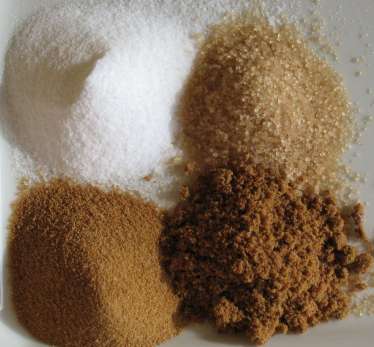
The conversation about Sugar and its many faces and names must inevitably continue, as it has potential to hide from even the most well-intended consumer. Once looking at the ingredients list, “Sugar”, “Cane Sugar” and similar terms will likely surface.
However, one must be wary of Sugar’s aliases in their various forms:
Brown Rice Syrup, Agave, Agave Nectar, Barley Malt, Corn Syrup, Dextrin, Dextrose, Ethyl Maltol, Mannitol, Xylitol, Sorbitol, Beet Sugar, Molasses, Brown Sugar, Caramel, Carob, Coconut Sugar, Date Sugar, Evaporated Cane Juice, Fruit Juice, Fruit Juice Concentrate, Golden Sugar, Golden Syrup, Honey, Maple Syrup, Raw Sugar, Refiner’s Syrup, Sorghum, and Turbinado Sugar (to name a few…).
One can only be free of these sugars by reading the ingredients list. It is important to note that artificial sweeteners are not a smarter option than sugar, and may pose similar health risks.
4.) Ingredients lists are like Chemical Alphabet Soup
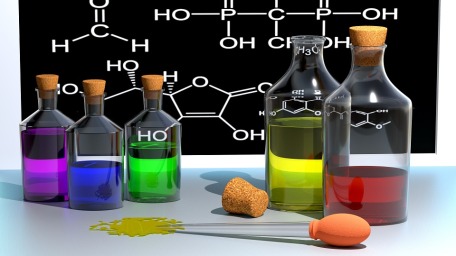
Alongside Sugar’s many relatives, one can typically find a slew of hard-to-pronounce chemicals and additives.
Monosodium Glutamate, or MSG, is a preserving agent whose prevalence has decreased in recent years (woohoo!), but can still be found in many packaged foods. This chemical contributes to neurological symptoms like seizures, migraines, Parkinson’s, and Alzheimer’s. It is also linked to certain types of Obesity; A famous experiment proved that mice injected with MSG actually became overweight, proving the correlation between Obesity and Monosodium Glutamate consumption (www.ncbi.nlm.nih.gov/m/pubmed/1106764). Even though the dangers of this chemical are now well-known, it has still not disappeared from our food supply.
Today, MSG commonly resides in our canned soups, cereals, and some hot take-out. Truly ridding the diet of Monosodium Glutamate can only occur once its alter egos are properly identified.
In order to disguise itself, it has taken on new names: “natural flavoring”, “yeast extract”, “caseinate”, “textured protein”, and “hydrolyzed pea protein” are cleverly hidden forms of MSG. Nobody needs this chemical, nor should anyone consume it in excess (or at all).
Butylated Hydroxyanisole (BHA) and Butylated Hydroxytoluene (BHT) are preservatives which release cancer-causing compounds into the body, resulting in tumor formation. Both are associated with liver and kidney damage, hair loss, cancer, and growth problems.
These chemicals are endocrine disrupters, which means they alter the hormonal system. In the case of BHT and BHA, they imitate the behavior of estrogen in the body, causing potential issues for both men and women (www.healthygrocerygirl.com/blog/bha-and-bht/). Balance is integral to the proper function of hormones, meaning that all levels of hormones in the body must be even; When hormones in the body oscillate, the whole system becomes disrupted- from sex hormones to stress hormones.
It is the liver’s job to flush out toxins, and both BHT and BHA end up therein, to be discarded and dealt with by the body. Consuming these chemicals, even in minute amounts, puts a strain on the liver. BHT and BHA are commonly found in cereals, chips, vegetable oils, instant mashed potatoes, and even chewing gum.
Potassium Bromate, another endocrine disrupter, is present in bread products. Supposedly, it improves the elasticity of the dough, and makes it easier to work with. However, it also creates Kidney problems, nervous system issues, thyroid damage, cancer, and most commonly difficult digestion (www.articles.mercola.com/sites/articles/archive/2016/02/24/chemical-cocktail-food.aspx). Nearly all restaurants and fast food chains serve buns containing Potassium Bromate.
Propyl Gallate is also (you guessed it) a hormone disrupter, mimicking estrogen in the body. Ingestion of Propyl Gallate causes infertility, neurological disfunction, and cancer (www.cnn.com/2014/02/10/health/chemical-food-additives/). It is used as a preservative in dried meats, frozen chicken, mayonnaise, chewing gum, soap, and shampoo.
Silicon Dioxide, also called Silica or Calcium Silicate, has been linked to the onset of autoimmune disease in humans. This chemical is made up of tiny particles of algae, better known as typical beach sand (www.cnn.com/2014/02/10/health/chemical-food-additives/). Inhalation and consumption of Silica can cause respiratory disease and lung cancer. This chemical is hiding in dried soups, dried coffee creamer, and other powdered products.
Benzoic Acid and Sodium Benzoate are preservatives. They have been shown to significantly alter the function of digestive enzymes in the gut, resulting in headache, diarrhea, constipation, asthma attacks, and hyperactivity (www.google.com/amp/s/medicalxpress.com/news/2010-01-chemical-additives-food.amp?client=safari). Benzoic acid is common in products which boast “low sugar”, especially cereal and processed meat.
Magnesium Sulphate (found in many brands of packaged Tofu) and Polysorbate 60 (thickener in packaged baked goods) have both proven to cause cancer when fed to laboratory animals (mphprogramslist.com/50-jawdroppingly-toxic-food-additives-to-avoid/). Despite this clear evidence, these chemicals are permitted in most processed foods.
People all over the world both willingly and unwillingly eat additives from A to Z every day.
5.) Food companies can make it work…

Nature vs. Nurture?
When a desired outcome or reaction in development of our foods cannot naturally occur, it is completely encouraged to throw in an additive or two; In other words, much of our food contains results of clever science experiments. Scientists in laboratories determine combinations of chemicals which inspire certain reactions; If the results seem beneficial to the taste or function of foods, they may end up amongst the endless list of chemicals on the back of the box.
For example, Emulsifiers (like Carageenan, Agar, Casein, monostearate, xanthan gum, Irish moss, and lecithin), facilitate the blending of two liquids (such as oil and water). Low-calorie, reduced-fat items often use Emulsifiers in order to extend shelf-life (www.google.com/amp/s/medicalxpress.com/news/2010-01-chemical-additives-food.amp?client=safari). Packaged Bread products require emulsifiers in order to retain shape. Butter, margarine, salad dressing, mayonnaise, ice cream, and toothpaste also enlist the help of these harmful additives. Even health food items commonly contain Carageenan, making this additive particularly difficult to avoid. Emulsifiers greatly irritate the gastrointestinal tract, and inhibit proper digestion.
6.) That Blue is probably too Blue to be true…
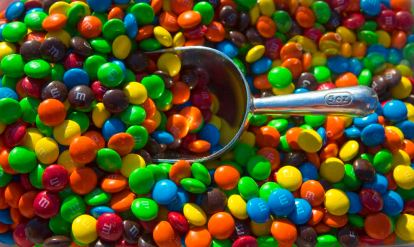
Changing Colors
When vibrant eye-catching colors are not observed in final food products, Scientists step in to create preferred hues using Chemicals.
Sodium Nitrate and Sodium Nitrite, two preservatives with big health implications, are decreasing in popularity as their dangers become common knowledge. During digestion, Sodium Nitrate and Sodium Nitrite blend with stomach acid, and this combination has been shown to cause cancer (www.google.com/amp/s/m.mic.com/articles/amp/87357/7-secret-ingredients-hiding-in-the-foods-you-eat-every-day?client=safari). These chemicals add color to, and increase the shelf-life of, various products including processed meats.
Benzoyl Peroxide is sometimes included as a bleaching agent in bread products. White flour is physically dyed white with Benzoyl Peroxide, in order to create a more appealing appearance. This chemical destroys existing beneficial bacteria in the gut when consumed, and also hinders their regrowth (www.motherearthnews.com/natural-health/terribe-truth-about-white-bread-zbcz1403). Any disturbance to the micro-biome can potentially cause ill effect. While other countries have banned Benzoyl Peroxide in their food outright, the US considers it safe to consume in small amounts.
Reds, Blues, Greens, and Yellows (with different numbers attached) are often used to color processed foods and household items. Brightly pigmented candy almost always contains artificial coloring. Even though they make foods look pretty, chemical dyes have been shown to cause attention disorders in children (www.google.com/amp/s/m.mic.com/articles/amp/87357/7-secret-ingredients-hiding-in-the-foods-you-eat-every-day?client=safari).
The Caramel coloring in soft drinks and bread products is synthetic, and the body does not process it easily. During manufacturing, a chemical called 4-methylimidaole is created, and this byproduct causes cancer (www.articles.mercola.com/sites/articles/archive/2016/02/24/chemical-cocktail-food.aspx).
7.) Junk food is, obviously, full of Junk…
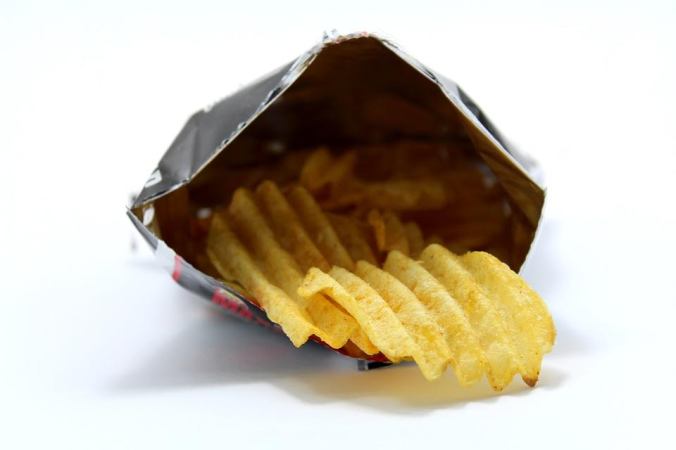
Since artificial colors, additives, and chemicals are most commonly found in sweet/sugary/refined/unhealthy options, there are inevitably lethal combinations occurring; Foods which contain the aforementioned dangers are usually nutritionally lacking in the first place. Knowledge, discernment, and dedication can bring power back to a seemingly helpless situation. Arming oneself with education enables proper decision-making; Commitment to health justifies the continuous struggle to truly know what we are consuming. After all, we are what we eat.
8.) Claims on wrappers of health foods don’t matter, and only ingredients lists can be trusted…
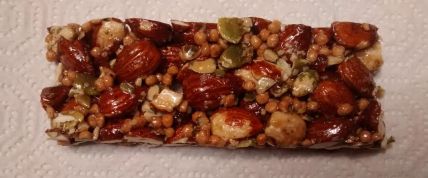
Irony
But wait…the language used on boxes of “health foods” must be scrutinized too? Those protein bars are not actually as healthy as advertised, and are even reminiscent of junk food?
Unfortunately, packaged foods that are marketed as being advantageous often reveal misleading ingredients. A product typically includes language on the wrapper which leads the reader to trust its benefits, and thus believe it to be a healthy choice.
The words “all natural” and “sugar free” appear all over the place, and have become seals of approval for positive choices, despite their widespread presence around unhealthy foods.
Further, the words “all natural” can be legally placed upon any product not containing artificial colors/flavors or “synthetic substances”; A definition this broad allows for extreme discrepancy. High Fructose Corn Syrup is actually considered “all natural” since, companies argue, it comes from corn; but this does not a good food choice make. Buyers seeking real, clean diets would not consider High Fructose Corn Syrup to be “natural” or beneficial, and many would not be aware of its prevalence in packaged foods.
Similarly, products labeled as “Gluten Free” are often immediately categorized as health foods, even though they may contain high amounts of sugar or other additives upon closer inspection. Buyers associate being Gluten Free with being healthy, and therefore these food choices automatically become perceived as positive.
The power of association extends to the word “Organic” as well, since consumers relate Organic foods to general health. However, just because a product is Organic, does not necessarily make it favorable to health.
Ice cream is still Ice Cream, even if there were no GMO’s, antibiotics, radiation, or additives used. Specifications for Organic foods are defined as having 95% or more Organic ingredients, whereas foods “made with Organic ingredients” must only contain 70% (www.bonappetit.com/trends/article/the-10-most-misleading-health-claims-on-food). One must read the ingredients list in order to determine whether the extra cost is worth the “Organic” label!
The terms “Antioxidants” and “Added Vitamins and Minerals” decorate packaged food items, but warrant little correlation to their ingredients. Dessert treats masquerade as Health Bars, claiming to supply “Antioxidants” and “Vitamins”; Upon reading the contents list, it becomes apparent that any supposed health benefits due to included Minerals are void, as various forms of sugar, grains, and additives actually constitute the product.
What on Earth should we eat then?
9.) The rule of few
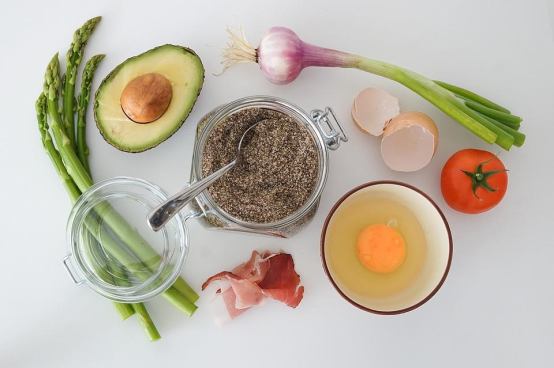
The fewer ingredients, the better!
Once gathering up the courage, flipping the box around, checking the ingredients, and seeing in writing an array of hidden chemicals…then reading the contents list becomes a ritual. Perhaps most crucial is the rule of few: the fewer ingredients, the better. The product with only a few contents is not only less artificial, and thus more real, but also inevitably more nutritious.
We are built to eat whole, real, clean, fresh foods: Organic produce (Yes, it’s possible to get produce that is reliably Organic), a rainbow of veggies, high-quality animal products raised without antibiotics/hormones, snacks like sprouted nuts and seeds, and complex carbs.
In short, cook! The real problem comes into play when our fuel largely comes from pre-packaged foods. How can we expect ingredients to retain optimal nutrition content if they are frozen, pre-cooked, or prepared? Though busy lifestyles impede a cooking routine, the rewards of such a practice are immediate and enjoyable, both for health and well-being.
Once a palate gets used to fresh, cooked meals with only necessary, whole ingredients, it’s not likely to enjoy the old junk as much. Cooking can become a therapeutic, exciting endeavor rather than a chore. If the majority of food eaten on a regular basis is unprocessed and full of nutrition, then an occasional splurge or pre-packaged meal is not devastating; A clean system can process a bit of junk here and there.

Overcoming the labeling charade
Those lurking laundry lists of foreign-sounding food ingredients can no longer be overlooked. Rather, we must inspect every letter, know how each ingredient impacts the body, think for ourselves, and make informed, delicious dietary decisions.
_________________________________________________________________
Original article by Erica Jeski
Edited by: Phil Chiara
Please, if you would be so kind as to like and/or follow us on your site of choice…and by doing so, we will return the favor, with more informative pieces in the future! Thank you for reading!
 Feverfew is a common herb, well known for its ability to treat migraines. Instead of just masking the pain, Feverfew treats the actual cause by lowering blood pressure, inhibiting the production of histamine, and diminishing two inflammatory substances: Serotonin and Prostaglandins. As a result, Feverfew controls the inflammation which causes constriction of blood vessels in the head, and prevents further blood vessel spasms. Tests have shown that the use of Feverfew may reduce frequency and severity of headaches. It is also shown to out-perform many NSAIDS like aspirin, making it a far less toxic alternative.
Feverfew is a common herb, well known for its ability to treat migraines. Instead of just masking the pain, Feverfew treats the actual cause by lowering blood pressure, inhibiting the production of histamine, and diminishing two inflammatory substances: Serotonin and Prostaglandins. As a result, Feverfew controls the inflammation which causes constriction of blood vessels in the head, and prevents further blood vessel spasms. Tests have shown that the use of Feverfew may reduce frequency and severity of headaches. It is also shown to out-perform many NSAIDS like aspirin, making it a far less toxic alternative.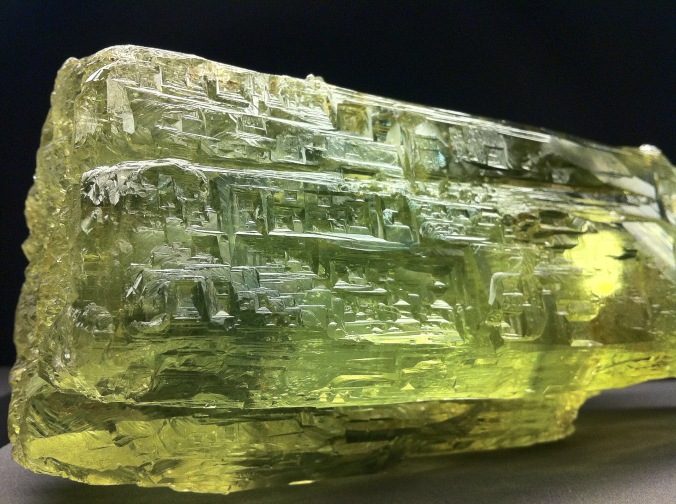











 Echinacea, known for its ability to strengthen the immune system, is one of the most widely used herbs. It is native to central and eastern United States, and was a Native American remedy.
Echinacea, known for its ability to strengthen the immune system, is one of the most widely used herbs. It is native to central and eastern United States, and was a Native American remedy.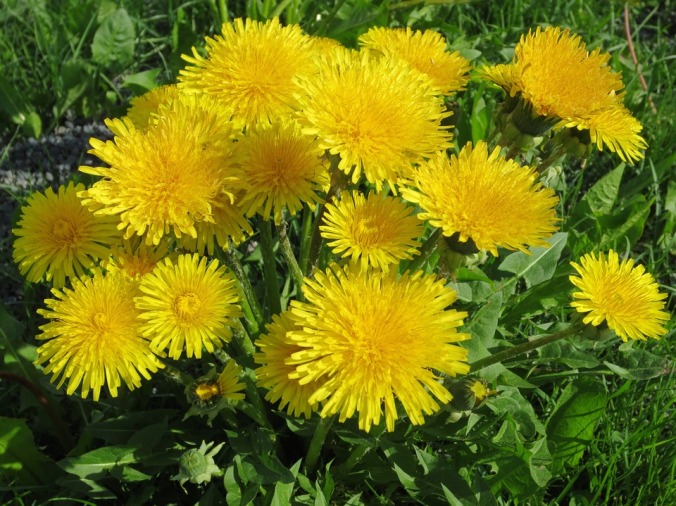 Dandelion, a weed that pervades most lawns and gardens, is actually one of the best treatments for liver disorders. This herb stimulates bile production, which encourages proper detoxification.
Dandelion, a weed that pervades most lawns and gardens, is actually one of the best treatments for liver disorders. This herb stimulates bile production, which encourages proper detoxification.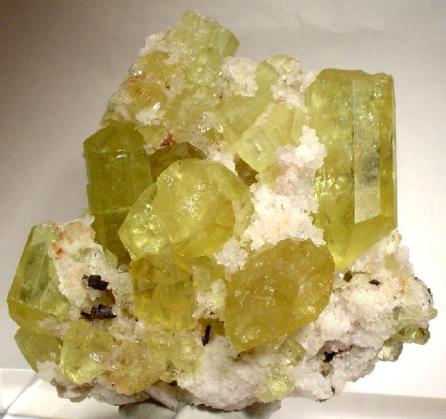
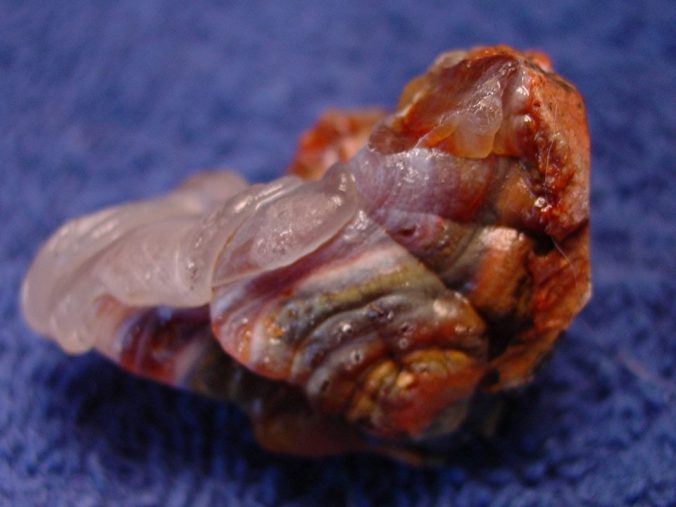 #
#

